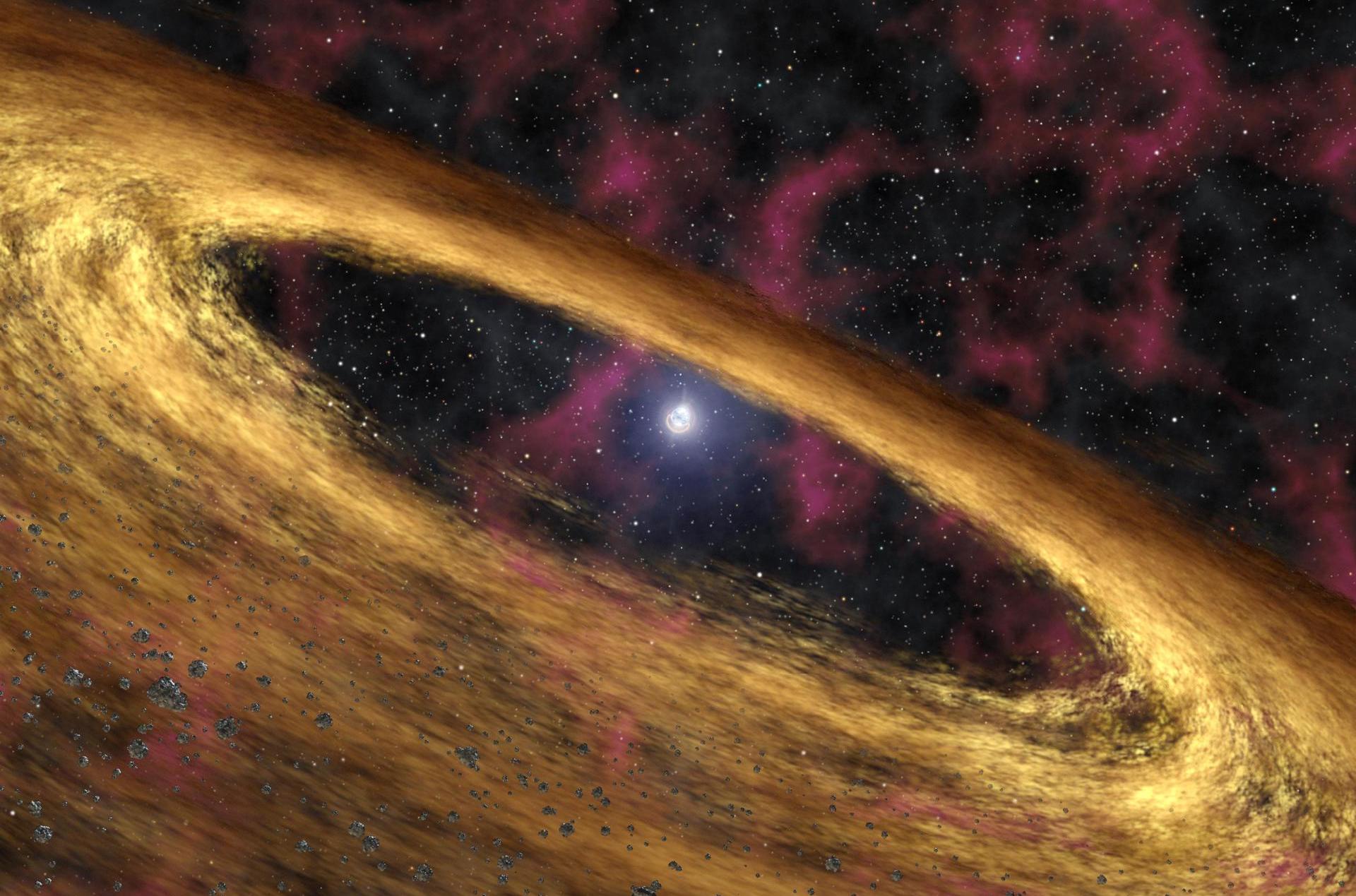Scientists discovered a new type of thermonuclear explosion that may never be seen again
It could take scientists 1,000 years to see anything else like it.

Astronomers studying a dead star on the edge of the Milky Way may have found evidence of a type of thermonuclear explosion that's never been seen before — and which may never be seen again.
Dubbed a "hyperburst," this gargantuan explosion appears to have occurred deep within a neutron star (the ultra-dense, compact core of a dead star) after hundreds or perhaps thousands of years of heat and pressure building up. When the explosion finally ignited in 2011, it released as much energy in about three minutes as the sun releases in 800 years, study co-author Jeroen Homan, a research scientist at Eureka Scientific in Oakland, California, told Live Science.
"For any type of thermonuclear explosion, you need very high temperatures and very high pressure," Homan said. "For a hyperburst, the temperature and pressure requirements are so high that we think it may only occur in a particular source once in 1,000 years."
If confirmed, this hyperburst would be the single most powerful explosion ever detected in a neutron star — and possibly the rarest explosion detected anywhere.
A smoldering ember
In 2011, a neutron star called MAXI J0556–332 (located about 140,000 light-years from Earth in the Milky Way's halo) erupted with a powerful flare of energy visible only to X-ray telescopes.
X-ray outbursts like these are relatively common in neutron stars that are part of a binary star system — that is, they share a common center of gravity with another nearby star. Outbursts occur when a neutron star's powerful gravity draws in great globs of gas from its companion star, causing the gas to explode on impact with the neutron star's surface. The outburst briefly heats up the neutron star, which astronomers can observe across the galaxy with X-ray telescopes; the more material that falls onto the star, the brighter the star appears afterward.
Researchers had just begun observing MAXI J0556–332 in 2011 when they saw the X-ray outburst ignite. However, something about this flare-up was different.
Sign up for the Live Science daily newsletter now
Get the world’s most fascinating discoveries delivered straight to your inbox.
"During the first week after the outburst ended, we noticed that this star was incredibly hot," Homan said. "About twice as hot as any other star that we've observed before."
Was this extreme heat simply the result of lots and lots of matter slamming into the neutron star's surface at once? After 10 years observing the neutron star, the team concluded that was not the case. During that decade of observations, the neutron star erupted with three more large X-ray outbursts — but none of them left the star nearly as hot as the 2011 outburst had. Some other mechanism had to be at play.
Enter the hyperburst
In their new study — which was published Feb. 9 on the preprint server arXiv and has yet to be peer-reviewed — the researchers calculate how a gargantuan thermonuclear explosion within the neutron star could have resulted in the extreme heating observed in 2011. The explosion would have built up for hundreds or perhaps more than a thousand years as globs of matter from the partner star fell onto the neutron star's surface every few years or so, steadily increasing the heat and pressure within the star, the authors wrote.
In most stars, high pressures cause hydrogen atoms to fuse together into helium, triggering nuclear reactions that release extraordinary amounts of energy. Some large stars can fuse heavier elements, like carbon, to create even more powerful nuclear explosions. But in order to heat MAXI J0556–332 to the degree that was observed in 2011, the explosion would have needed to be of a magnitude never seen before.
"We think we've discovered a thermonuclear explosion that occurred deep in the neutron star as the result of nuclear fusion of probably oxygen or neon," Homan said. "This would be the first observation of a hyperburst."
Observing a second one may be near impossible in this lifetime — and not only because the star must start from scratch again, rebuilding heat and pressure for another 1,000 years or more. Given that no other neutron star has ever been observed heating up to the degree that MAXI J0556–332 did in 2011, the astronomers suspect that hyperbursts may be a vanishingly rare phenomenon that is possible only under extremely specific circumstances.
What are those circumstances? That's what the researchers hope to find out next. Future research will focus on MAXI J0556–332's mysterious companion star, to see if there is some special property about it or the way it feeds matter to MAXI that makes this distant star system more prone to hyperbursts. The researchers won the cosmic lottery with their 2011 observation, Homan said. Now, it's time to figure out how they got so lucky.
Originally published on Live Science.

Brandon is the space/physics editor at Live Science. His writing has appeared in The Washington Post, Reader's Digest, CBS.com, the Richard Dawkins Foundation website and other outlets. He holds a bachelor's degree in creative writing from the University of Arizona, with minors in journalism and media arts. He enjoys writing most about space, geoscience and the mysteries of the universe.









